Matador Network's Blog, page 722
January 5, 2021
Why Hope Valley is the best place
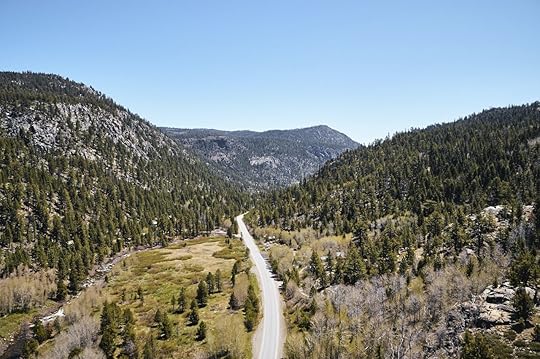
Every trip to Lake Tahoe starts with the same question: north shore or south shore? While in summer, Tahoe’s north shore offers a quiet nature experience and the south shore beckons the crowds bouncing from jet skis to casinos, the winter season choice is based on ski resorts like the north’s Squaw Alpine and the south’s Heavenly.
If you ask me, though, having toured the area many times as a Northern California native, that age-old quandary is a trick question. That’s because the region’s real treat lies just south of South Lake Tahoe in lesser-known Hope Valley, which I visited most recently last fall. Here is why Hope Valley is the place to go in greater South Lake Tahoe.
Twenty miles and a world away from Tahoe
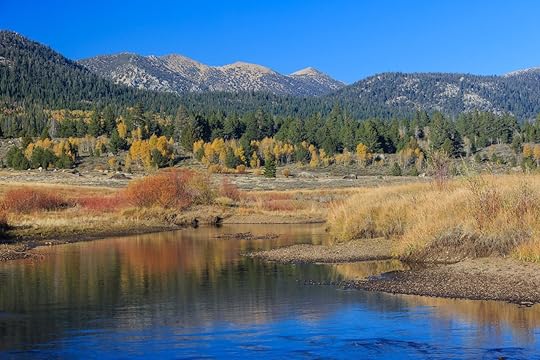
Photo: Kit Leong/Shutterstock
Pulling off the Carson Pass Highway at Pickett’s Junction, I might have thought I’d overshot my destination were it not for a sign for the Hope Valley Wildlife Area. Fall had begun to work its Midas magic on the valley’s aspens, turning the eastern slope of the Sierra Nevada gold like the groves a few states over in Colorado’s Rockies.
A trio of informational placards, and what I later learned was Pickett’s Peak in the distance, confirmed that I’d arrived in Hope Valley. A hunting and fishing ground of the indigenous Washoe people for millennia, they explained, Pewetzali Yewe was given its English name by Mormon settlers around the start of the Gold Rush. A few paces down the highway, a commemorative rock elaborated on the valley’s heritage, noting its place on the Pony Express.
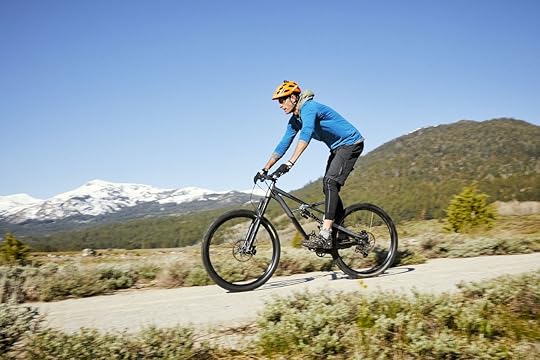
Photo: Ren Fuller/Wylder Hotel
Today, it’s mainly outdoor recreationists who pass through this pocket of Alpine County, the least populated county in all of California. Trout species and small game draw anglers and hunters to the wildlife area. Hikers and mountain bikers favor the region’s granite peaks.
At the first sign of snowfall, skiers descend on the nearby Kirkwood Resort, although the valley’s cross-country trails are well-worn in their own right. Then, as winter melts into spring, Carson Pass trades enviable foliage for carpets of wildflowers, becoming a showroom for Western dog violets and blue-eyed Marys, sunny buttercups and bright red fireworks of Indian paintbrush.
Hope Valley stays dressed in its seasonal best year-round. And no matter the month, it facilitates every bit of adventure Tahoe travelers covet, including access to Big Blue itself. The only thing missing here, thankfully, is the crowds — even compared to North Lake Tahoe.
A land of lakes but not the one you think

Photo: EdgarSnapsA7ii/Shutterstock
Visitors to the Tahoe area rarely need reminding to spend time lakeside. During summer, there’s little that can pry kayakers, paddleboarders, and water skiers from Lake Tahoe’s glassy surface — except perhaps the temptation to cool off with a plunge. Winter hardly deters boaters. Others break from the surrounding pistes to skirt the lake on snowshoes.
In Hope Valley, however, travelers can expect a surprising suggestion: skip Lake Tahoe altogether. Although the valley sits just 20 miles from the region’s most famous body of water, it’s ringed by lakes that feel private by comparison.
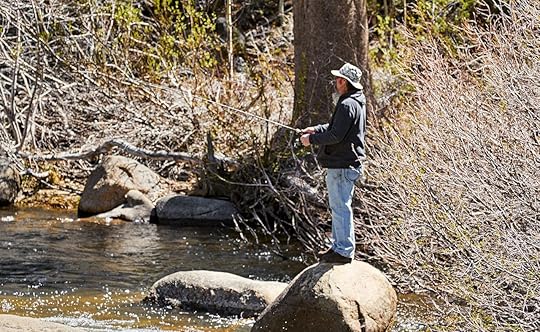
Photo: Ren Fuller/Wylder Hotel
Caples Lake tops the list. Gaining roughly 1,000 feet in elevation over Lake Tahoe, this high-alpine swimming hole off the Carson Pass Highway opens to the best of Eldorado National Forest, with trails feeding into the Mokelumne Wilderness for hikers. It’s also stocked with rainbow and brown trout, which swim alongside natives species like lake trout, for both summertime anglers and ice fishers to enjoy.
Fly fishers may prefer the West Fork Carson River, which begins at Lost Lake roughly 20 miles northeast of Hope Valley and runs right through. Day hikers have options for exploring any of the region’s myriad lakes on foot, though the three-mile Scotts Lake trail and 2.5-mile Crater Lake trail that ascends toward Stevens Peak are pleasant and accessible. Both start from the Blue Lakes Road turnoff a few minutes south of Hope Valley.
Naturally, the Blue Lakes are a draw in their own right. Home to multiple campgrounds, this pristine cluster of lakes is a boon for boaters and floaters alike on hot summer days.
A slice of history and a scoop of cobbler
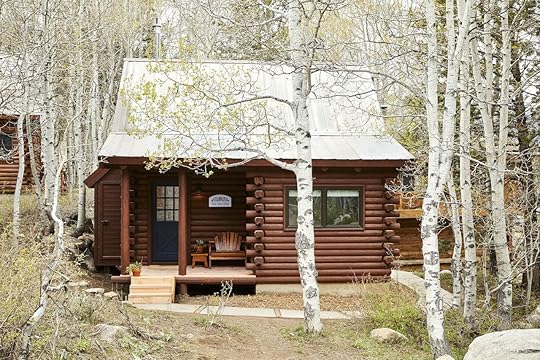
Photo: Ren Fuller/Wylder Hotel
In the middle of it all is the Wylder Hotel Hope Valley, formerly Sorensen’s Resort. Soon approaching its centennial, the property was founded by Danish immigrant and onetime Carson Valley ranchhand Martin Sorensen, who built a handful of cabins near Pickett’s Junction in 1926 that has been frequented ever since.
Since becoming a Wylder hotel in 2019, the resort has undergone renovations to its 30 rustic yet well-appointed cabins — think little to no internet access but a fully equipped kitchen and even fuller spice rack — which share the 165-acre property with seven deluxe yurts, 14 tent and RV sites, and a lone Spartan trailer for the hip, modern glamper. These accommodations are joined by a newly redone general store and the on-site cafe, Sorensen’s.
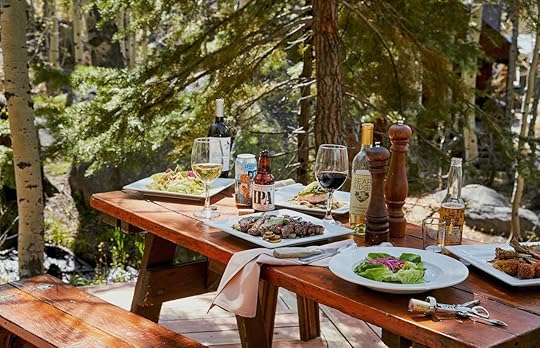
No cafe on the edge of wilderness, in this case Humboldt-Toiyabe National Forest, has any business sporting a menu as extensive or artful as Sorensen’s, which pays tribute to the resort’s legacy not only in name but also in two of its offerings: the berry cobbler, a nearly 100-year-old recipe that joins sweets like the classic apple pie (also sold at the general store) on the dessert menu, and the beef Burgundy stew, which is tellingly served for breakfast, lunch, and dinner.
Local mountain bikers and road bikers alike cycle through Sorensen’s to fuel up for their rides, joining overnight guests on the wide-open patio. For hotel guests, though, after a hearty meal or long day outdoors — be it on Popo’s Trail right out your cabin door, a more strenuous hike up Pickett’s Peak, or a tour of the property’s fishing holes and fire pits — there’s yet another luxury awaiting mere feet from the cafe: a private, wood-fired sauna to reflect on the day’s adventures.
Continue south for a night on the town — albeit a quiet one

Photo: Cutthroat Brewing Company/Facebook
After a few days in Hope Valley, most travelers will have forgotten all about the nightclubs and casinos that keep South Lake Tahoe awake well into the morning. While the proximity is comforting, Tahoe’s noisier shore might even be jarring after acclimating to the wilderness sounds 30 minutes south. On the other hand, you may find yourself wanting a little more activity or a change of social scenery during a longer stay. Enter Markleeville.
The seat of Alpine County, Markleeville is located some 15 minutes southwest of Hope Valley. It’s a small community, but there is a community feel, with a modest art gallery and museum in town. If you’re looking for a tame night out, look no further than Cutthroat Brewing Company, whose drink list covers not only the requisite brews but also local wines, ciders, seltzers, boozy coffee and cocoa, and even sake-tails made with Sabe Sake. Take your choice out to the patio to wash down the better-than-expected brewery fare, including blistered shishito peppers, sizzling chicharrones, and at least six different types of burgers.
Of course, there’s nature worth discovering in Markleeville, too. Time permitting, spend an afternoon at Grover Hot Springs State Park before heading back to Hope Valley. After all, there’s nothing like a spa day in the middle of a high-alpine meadow — surrounded by even more peaks to pique your interest in a return trip. 
More like thisTravelThe 25 coolest towns in America to visit in 2021
The post Hope Valley is Lake Tahoe’s loveliest, little-known option appeared first on Matador Network.

How to make English breakfast

In a country that doesn’t have the most shining culinary reputation, the full English breakfast stands out. The contents of the English breakfast platter is a laundry list of decadent, nourishing ingredients and hearty food that becomes fuel for your day: salty, greasy sausage and bacon; toast; a couple spoonfuls of beans and mushrooms; sliced tomatoes and blood sausage; and a shiny pair of sunny-side-up eggs.
Affectionately known as a fry-up in England, the English breakfast is what food writer Ellen Castelow called a “national institution” in a story for Historic UK — one that’s intertwined with the country’s political and economic history. To understand how the English breakfast became so entrenched in English society, you have to travel back to the 13th century and the rise of a social class called the gentry. These country-dwelling aristocrats considered themselves the cultural inheritors of Anglo-Saxons — the group of Germanic people who, up until the Norman Conquest in 1066 when the French essentially took over, ruled the British Isles.
This might all sound like dense and unnecessary history, but it’s actually quite important because the gentry considered themselves the stewards of original English culture. Their embrace of the English breakfast signaled that it was an essential element of an authentic English lifestyle. At their grand houses in the country, the gentry ate a full English breakfast before hunting, and proudly offered the hearty meal to guests who traveled long distances to visit — a tradition that extended to both the Georgian and Victorian eras.
By the time the Victorian era arrived, the gentry had been replaced by a new class of wealthy merchants, industrialists, and businessmen — England’s aristocracy. According to the English Breakfast Society, which is based in Hertford, England, the Victorians elevated the English breakfast to an “art form,” organizing “elegant and refined” social events centered on breakfast that “demonstrate your wealth, good taste and social upbringing.”
By the time the Edwardian age began in 1901, English breakfasts began appearing on menus in hotels and restaurants, signifying its growing popularity and widespread appeal. And perhaps more importantly, this era also solidified the staple ingredients of the English breakfast: “bacon, eggs, sausage, black pudding, baked beans, grilled tomato, fried bread, and toast,” per the English Breakfast Society. Released from its upper class origins, the so-called common English breakfast soon became a favorite among laborers, and began appearing in the homes of the middle and working classes. By the 1950s, the English Breakfast Society writes, “roughly half of the British population began their day by eating the same English breakfast we would eat today.”
You’ll find a few different variations of the English breakfast. The full Irish breakfast, for instance, includes all the same elements of the English equivalent but it’s typically served with Irish soda bread, boxty (an Irish potato pancake), or bubble and squeak — the fanciful term for hash of fried bits of bacon or sausage and cabbage, so named for the term it makes as it’s cooked over a fire.
In Scotland, a full breakfast sometimes includes haggis and Lorne sausage — a type of breakfast meat that has no sausage casing, but is rather formed into a block and served in squares or a tattie scone, otherwise known as a potato scone. In both Ireland and Scotland, it’s also common to find black or white pudding (sausage made with pork blood, pork fat or suet, and oatmeal; the latter contains no blood).
However, the standard elements of the English breakfast have remained consistent and the methods and flavors of their preparation mostly unchanged. Remember, the key to English breakfast is that (nearly) each element is fried (hence the nickname “fry up”) so if you’re skipping a step and not cooking the ingredients in the same frying pan or skillet, you’re missing the point. Here are the main ingredients you’ll encounter in a full English breakfast.

Photo: Dariusz Markowski/Shutterstock
Sausage
The place to start might be with famous English pork sausages, which are historically (and famously) made in Cumberland, Lincolnshire, and Yorkshire, among other counties. Also known as bangers, the recipes vary based on the region where the sausage originated. Lincolnshire sausages, for instance, are seasoned with sage and are coarsely ground, while those from Oxford are mixed with veal. Glamorgan sausage from Wales is a vegetarian combination of breadcrumbs, leeks, and cheese.
Back bacon
While the typical American bacon comes from pork belly, British back bacon is cut in one elegant strip from both the belly and the loin. A rasher (or slice) of back bacon has more meat than American bacon, but it’s still marbled with thin stripes of fat for extra flavor, and it tends to be thicker and rounder in shape.
Eggs and crispy toast
This classic breakfast ingredient should be cooked the traditional way to pass the full English breakfast muster. That means frying the eggs sunny-side-up so there is plenty of yolk to soak up with your toast. However, you’ll also find that some restaurants serve English breakfast eggs scrambled or poached. If you’re making your English breakfast at home, it’s crucial to fry the bread after the bacon and sausage so that the bread soaks up the delicious grease leftover from the meat. Resist the temptation to pop the bread in the toaster.
Mushrooms and tomato
A whole tomato cut in half should be seasoned with salt and pepper and then cooked until it becomes tender, crispy around the edges, and slightly blackened on the side facing the skillet. A cup of mushrooms — like chanterelles or portobellos — should be fried in butter.
Beans
The seasoned gourmand might balk, but a true English breakfast calls for canned baked beans. The beans are probably the only element you’re not going to want to cook in the frying pan. Although the English Breakfast Society includes baked beans on its list of must-have full English breakfast ingredients, there’s actually some debate among connoisseurs of English cuisine over whether or not they actually belong there, the most common argument against them being that they are a soggy, mushy, wet mess to an otherwise harmonious platter of buttery, greasy, salty goodness. If you do choose to include them, the English Breakfast Society suggests serving them in a small ramekin on the side so they don’t spread across the plate. 
More like thisDessert11 creamy, decadent English desserts that will make you wish you were British
The post How to construct the perfect English breakfast with just 7 foods appeared first on Matador Network.

Australia changed national anthem

The lyrics of the Australian national anthem, “Advance Australia Fair,” previously referred to the nation as “young and free,” though now that has been changed to “one and free.” The change is being celebrated by the country’s Indigenous people, who have lived on the island for over 60,000 years.
“In terms of culture, society, and population, we go back 60,000 years. We’re very definitely not young,” First Nations Foundation chair Ian Hamm told the Australian Broadcasting Corporation. “’One and free’ looks for what brings us together. It’s actually a focal point for that discussion about who we are as a country.”
The “young” line implied that the country’s history began with colonialism. When Europeans arrived in the 18th century, around 750,000 Indigenous people belonging to over 400 nations already lived in Australia.
The change went into effect on January 1, and was supported by leaders across the political spectrum. 
More like thisArt + ArchitecturePerth is Australia’s most underrated city for art lovers
The post Australia has changed its national anthem to include Indigenous people appeared first on Matador Network.

Australia to count koalas with drone

Drones aren’t just for making epic travel videos. According to The Independent, the Australian government will soon be using them to conduct a mass survey of the country’s koala population, amid fears that the species may be nearing extinction. It’s part of a larger project to protect Australia’s koalas from a variety of threats, including habitat destruction, climate change, disease, and getting hit by cars.
The government will use both heat-seeking drones and sniffer dogs to document the koala population, estimated to be around 329,000 in 2016. Since then, annual bushfires and habitat loss due to deforestation, urban development, and mining have severely reduced that number. Right now the Australian Koala Foundation suspects there could be fewer than 80,000 remaining, and possibly as few as 43,000.
Susan Ley, the Australian environment minister, said, “For all our focus on koalas, scientists are telling us that there is a serious lack of data about where populations actually are, how they are faring and the best ways to help them recover after the devastating bushfires.”
This population survey is intended to answer those questions.
A recent report by the World Wildlife Fund (WWF) estimates that more than 60,000 koalas were killed, injured, or displaced in the 2020-2021 bushfires.
In the report, WWF-Australia chief executive Dermot O’Gorman said, “That [60,000 figure] is a devastating number for a species that was already sliding towards extinction in Eastern Australia. We cannot afford to lose koalas on our watch.” 
More like thisWildlifeWhere to see all of the internet’s favorite animals in real life
The post Australia will be using drones to count its declining koala population appeared first on Matador Network.

Why digital nomads go to Ruidoso
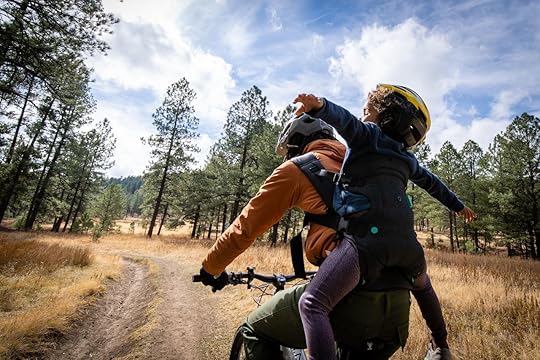
In Ruidoso, New Mexico, somewhere along Sudderth Drive, a woman sits over a latte and her laptop in the back of a cafe. Unbeknownst to her, she’s a fitting image of the town’s future. Here in the rugged and beautiful Sierra Blanca mountains, a revolution is taking place. The digital nomad movement — driven by the COVID-spurred rise in remote work and a desire to escape the ghosts of cubicles past — is taking the town by storm.
Rich in open spaces, outdoor adventures, and espresso-laden WiFi, Ruidoso — population 8,000 — is rising as the Southwest’s next digital destination, an extended home-away-from-home locale. If you pack up your laptop, your hiking boots and mask, and your sense of adventure, here’s what you’ll find in this high-tech corner of the Old West.
1. Ruidoso is a small town that eats like a global village.
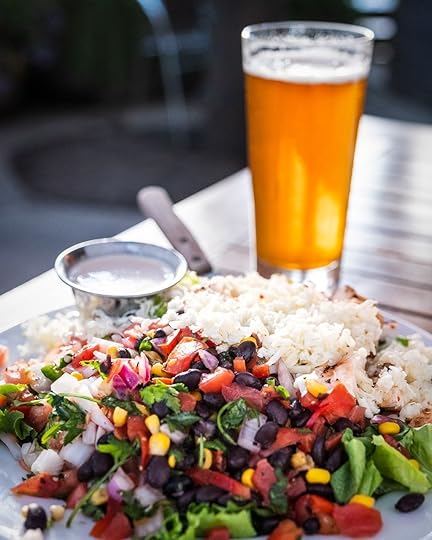
Photo: Discover Ruidoso / Grille Caliente
In Ruidoso, local chefs have often traveled far and wide to hone their skills; now, they’ve brought their mastery back home for good, and everyone’s thankful they did. The result is a diverse collection of dining options that merge the flavors of the Southwest with influences from around the world. Chef Keith Weber of Rio Grande Grill epitomizes this with dishes like his Green Chile Chicken Lasagna and Outlaw Lager Stew — made with the brewery’s Sierra Blanca Outlaw lager — a dish that’s achieved “local legend” status.
Locals also gather out on the patio at Grill Caliente, a Southwestern bistro on the border of Ruidoso’s Midtown district, for dishes built from local ingredients and New Mexican pride. “To us, that means chile,” the restaurant proclaims boldly, and to be sure, you don’t know a pork chop’s chipotle-poblano potential until you’ve had one here.
The unsung hero of Ruidoso’s culinary community is the Texas Club Grill & Bar, on the north side of town. The easiest decision to make here is starting with a plate of Texas Toothpicks; the tough choice is deciding whether to go casual with the legendary Big Tex Burger or step it up with a ribeye or porterhouse. Take solace in knowing that you’ll be stoked on either. (And before we move on, a quick insider secret: Texas Club’s Sunday morning Benedicts are as epic as the restaurant’s once-a-week brunch is underrated).
2. The town has everything you need to establish a comfortable home base.
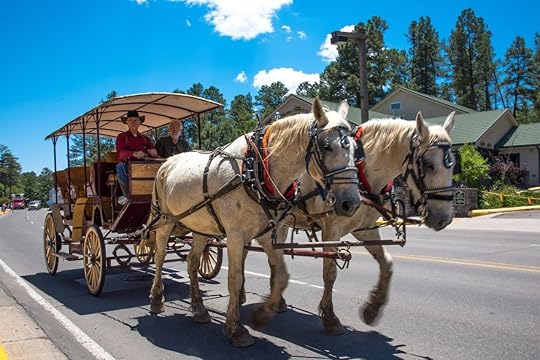
Photo: Ruidoso Tourism
Set your family up in a multi-bedroom condo unit, complete with kitchen, balcony, and hyper-fast WiFi, and you’re good to go — the town center is walkable and bikeable from anywhere you choose to call your remote-work basecamp. Settle in with a walk along the riverfront up to Blue Lotus Day Spa, where you can enjoy a massage or a yoga class to get your senses aligned before opening the laptop.
Nowhere in the Southwest is better primed for Airstream camping than Ruidoso, either. Midtown Mountain Campground & RV Park is located in the heart of town, easy walking distance from tons of great shopping, restaurants, and bars. The owners and managers live onsite — hit them up for local pro tips! Just outside Midtown, Along The River RV Park offers pristine views and a cozy campground within a stone’s throw of the heart of town. Arrowhead Motel & RV Park is another great option that allows families to check into a room or camp onsite. All three of these campgrounds have showers and amenities to restock and refuel for work and adventure.
3. You can walk to work — and then to happy hour.
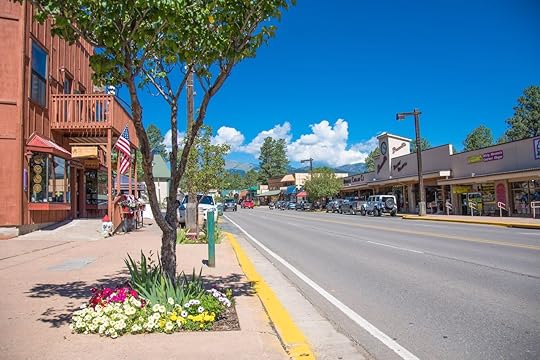
Photo: Ruidoso Tourism
Of course, there’s got to be some actual “work” in this remote-work lifestyle you’ve so carefully cultivated. When it’s time, grab a seat at Sacred Grounds, where a morning of work in the main room is like posting up in a treehouse above the river. The WiFi is strong, the coffee is stronger, and there’s no better place to pop open the laptop for a few hours of productivity without having to even venture out of Midtown.
Stick around after shutting down for the day — the bar at Sacred Grounds buzzes in the evenings with live music and libations from local craft producers. Or you could simply hole up mask-free in your lodge with a pot of coffee and a grab-n-go sandwich from Cornerstone Bakery. Just don’t forget to leave a window open to let the smell of the pines liven your creative senses.
The best thing about work is that it eventually ends, and when it does, happy hour is never far away in Ruidoso. Stuff the laptop into your backpack and walk down the block to Lost Hiker Brewing, where the town’s craft-beer lovers gather at the picnic tables to swap stories and plan the following day’s adventures over a pint of Spinning Compass Amber. For something with a stem, make Noisy Water Winery your stop to sample locally produced dry reds, many of which have multiple ribbons around their bottlenecks. And don’t forget, you’re in New Mexico. Here, “great margaritas” are just called “margaritas” (ahem, Casa Blanca).
4. You can bike or hike on your lunch break.
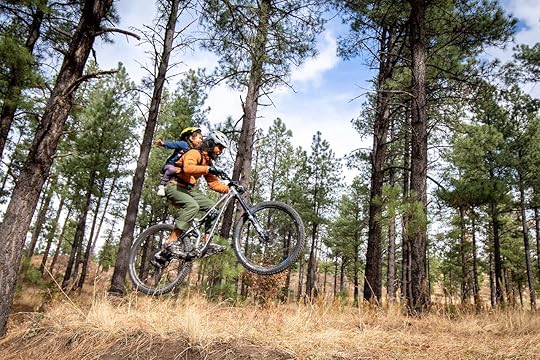
Photo: Matador Network
There are over 40 miles of trails accessible from the heart of town, and there’s no need to fight for a parking spot at a busy trailhead — you can literally ride and hike from your lodge to multiple trail systems. The Grindstone and Alto Lake networks spread for 18 miles, while the Cedar Creek system, home to the famed Spaghetti Bowl Mountain Bike Trail, adds 30 to that total. No matter which trail you choose, expect seclusion — there aren’t many people around to crowd the path.
And of course, you can go even further, if that’s your kind of thing. OHVs, short for off-highway vehicles, are permitted on roadways through town and offer a great way to hit the trail systems and backroads of Lincoln County without missing any of the views. Backcountry Attitudes runs 4X4 buggy tours that include more hairpin turns than you can count.
Summiting Sierra Blanca Peak and skiing at the adjacent Ski Apache resort are synonymous with Ruidoso as well. For the best experience at either, head out early in the morning to quell the adventure lust before coming back to town and settling in for an afternoon on the laptop. In Ruidoso, this is all part of a good day’s work.
5. Educational opportunities for the kids are everywhere.
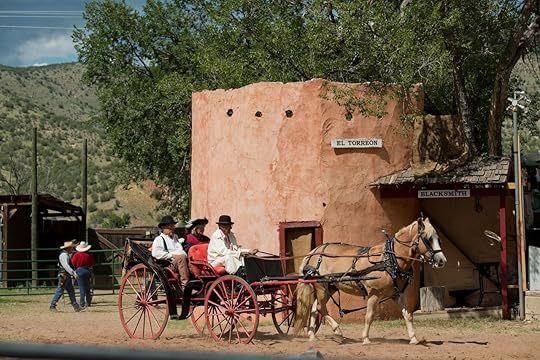
Photo: Ruidoso Tourism
The ability to spend more time with the kids is among the defining attractions of remote work, and no place makes this easier than Ruidoso. “Family excursion days” built around a theme like American history, arts and crafts, and outdoor adventure are useful for narrowing your options: On “history day,” for example, start with a morning trip to nearby Lincoln — about 40 minutes by car — to see the historic Lincoln County Courthouse where Billy the Kid escaped by jumping from a second-story window. On the way back to Ruidoso, stop by Fort Stanton National Historic Site to learn about the Lincoln County War and tour New Mexico’s best-preserved military fort.
Outdoor ethics are key to responsible adventure, and nowhere is more apt for passing on proper knowledge of the outdoors than Smokey Bear Historical Park. Here, educational exhibits and interpretive gardens celebrate the birthplace of Smokey Bear and his legacy of forest conservation. Another way for kids to connect with Ruidoso’s natural legacy is through eco-bio hikes to see wildlife — many of Ruidoso’s trails provide a chance to view deer, elk, and so, so many birds.
6. Southern New Mexico is loaded with day-trip options.

Photo: Matador Network
Upholding your self-promise to keep the laptop shut for a full day can be tough, but a quick day trip from Ruidoso will help lighten the week’s mental load. Kids, adults, and even dogs love White Sands National Park, which is under 90 minutes from town. Drive into the park and enjoy short hikes across rolling gypsum dunes and expansive views of the surrounding Sierra Blanca mountains.
Also worthy of a day trip are the nearby Valley of Fires Recreation Area and Bosque del Apache National Wildlife Refuge. The latter offers wildlife viewing opportunities — including sandhill cranes — from its visitor center just off I-25; the former was created when, 5,000 years ago, the Little Black Peak volcano exploded, and its subsequent lava flow turned the Tularosa Basin into a hotbed of quirky magmatic configurations. Over time, cacti and other plant life have sprouted through the lava, and exotic species like bats and lizards call the basin home.
For a full-day excursion, head south to Carlsbad Caverns National Park. Home to at least 119 underground caves as well as above-ground canyons to explore, this one will have the kids (and the adults) marveling at the serene — if sometimes eerie — natural world around and underneath us. When you’re done, Ruidoso will be waiting to welcome you back to your new home away from home. 
The post Ruidoso, NM, is the next big destination for remote families. Here’s why. appeared first on Matador Network.

January 4, 2021
LAX’s COVID-19 testing lab

COVID-19 testing for travel can be a stressful experience, particularly waiting for your test results to come back in time. With the unveiling of a new lab at LAX, the results of PCR (nasal swab) tests will be made available to passengers within 24 hours, down from the previous 48 hours. In addition to PCR tests, rapid tests are also being offered, which yield results in three to five hours. Tests have been available at Terminal 2 for months now, but the new lab will markedly increase the efficiency of results.
Justin Erbacci, Chief Executive Officer of Los Angeles World Airports, said in a statement last week, “As more destinations around the world integrate COVID-19 testing requirements for arriving passengers, and as passengers are choosing to take steps to monitor their health when flying, providing easy access to rapid testing is another way LAX can help bolster safe travel. In our continuous quest to innovate and reimagine the airport experience, we partnered with the private sector to design, construct and open a first-of-its-kind on-site laboratory that will provide an accessible and affordable rapid testing solution.”

Photo: LAX
The lab was built from modular shipping containers specifically for its location near Terminal 6. Visitors will be asked to wait under shade coverings while they complete their tests at one of four open-air collection windows. Test results will be transmitted to passengers electronically.
PCR tests cost $125, and it’s strongly recommended to book your appointment online in advance. 
More like thisAirports + Flying14 airports where you can get tested for COVID-19 in the US
The post LAX’s new COVID-19 lab delivers rapid test results in three hours appeared first on Matador Network.

New Dark Sky Park in Minnesota
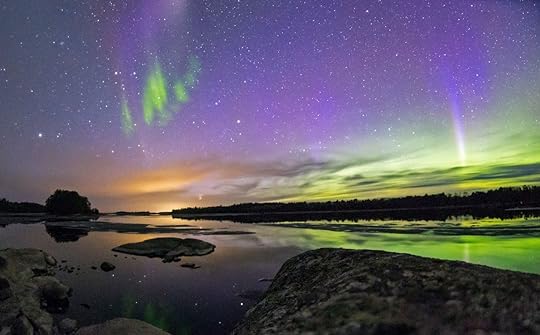
Minnesota recently obtained its first-ever certified International Dark Sky Park designation, giving people the perfect space for stargazing in one of the country’s most northerly areas. Voyageurs National Park, located in northern Minnesota on the Canadian border, was recognized for its dark skies, perfect for stargazing, and awarded the “International Dark Sky Park” designation.
To qualify as a Dark Sky Park, the International Dark-Sky Association asks applicants to creatively address light pollution, like installing energy efficient light and creating public education initiatives about the night sky. Voyageurs National Park met these requirements, retrofitting existing exterior light fixtures across the park with sustainable lighting and promoting a range of educational programs. The park currently hosts a virtual Night Sky Explorer program, and an additional virtual learning program is currently in the planning stages for US classrooms.
Conservancy executive director Christina Hausman Rhode told Lonely Planet, “Becoming an official Dark Sky Park means the Park and the Conservancy will further prioritize the preservation of darkness at the park for wildlife and people, as well as the development of dark sky education that shares the cultural stories connected to our starry skies and the actions everyone can take, whether they are at home or camping in the park, to keep the night dark.” 
More like thisAstronomy5 best dark-sky destinations in the US
The post Minnesota just got its first International Dark Sky Park appeared first on Matador Network.

Kuta Beach cleaned off plastic trash

Bali’s beaches are some of the most beautiful in the world, but unfortunately, they’re also plagued with pollution. Poor waste management on the island, as well as as well as monsoon weather, have led to plastic waste becoming a yearly sight on Bali’s beaches, particularly Kuta, Legian, and Seminyak. On Kuta Beach, locals spent the first day of the new year cleaning up the sands, where 30 tons of marine debris had accumulated, 70 percent of which was plastic.
Wayan Puja, from the environment and sanitation agency of the Badung area, told The Guardian, “We have been working really hard to clean up the beaches, however the trash keeps coming. Every day we deploy our personnel, trucks and loaders.”
By Saturday, over 60 tons of trash was removed from beaches in Kuta, Legian, and Seminyak, carted away by trucks, making for a total of 90 tons of waste picked up in just two days. While the idea of a community banding together to clean up their beaches is encouraging, the root issue doesn’t seem to be going away anytime soon.
Dr. Gede Hendrawan, head of the Center for Remote Sensing and Ocean Sciences at Bali’s Udayana University, said, “The biggest problem is actually the trash handling hasn’t been effective in Indonesia. Bali has just started to reorganise it, also Java has just started.”
Although the Indonesian government launched a national strategy last April to battle the plastic waste crisis, it’s an uphill battle. According to state-run news agency Antara, Indonesia wants to cut plastic waste by 70 percent by 2025 and have zeo plastic pollution by 2040. 
More like thisSustainabilityBali’s beach pollution is getting out of hand. Here’s what you can do.
The post Bali locals spend first day of 2021 cleaning up Kuta Beach appeared first on Matador Network.

Safest airlines in the world in 2021

Safety was certainly a buzzword when it came to travel in 2020, and that’s likely to carry over into 2021. AirlineRatings, which evaluates 385 airlines around the world, just released its official list of the safest airlines for 2021. The ranking is determined by factors like crash frequency, incident records, aircraft age, and scandals surrounding the airline. This year Qantas has been named the safest airline, continuing its run of success from 2014 to 2017, 2019, and 2020, when it was also named the world’s safest airline.
Geoffrey Thomas, AirlineRatings’ editor-in-chief, told CNN Travel that their criteria was adjusted this year. “Over the past two years,” Thomas said, “we have become aware that some airlines, which had passed bi-annual safety audits, were not on a day-to-day basis following the operational disciplines required by the auditors. Accidents and incidents make up five of our seven star rating with audits accounting for one and Covid-19 compliance the final star for a maximum seven-star ranking.”
The world’s 10 safest airlines in 2021 according to AirlineRatings are:
Qantas
Qatar Airways
Air New Zealand
Singapore Airlines
Emirates
EVA Air
Etihad Airways
Alaska Airlines
Cathay Pacific Airways
British Airways
The emphasis on safety has been even more pronounced during the pandemic, leading AirlineRatings to create a separate list of the top COVID-19 compliant airlines. This list includes Air Baltic, Air New Zealand, Alaska Airlines, All Nippon Airways, AirAsia, British Airways, Cathay Pacific Airways, Delta Air Lines, Emirates, Etihad Airways, EVA Air, Japan Airlines, JetBlue, KLM, Korean Air, Lufthansa, Singapore Airlines, Southwest Airlines, Qatar Airways and WestJet. 
More like thisAirports + Flying14 airports where you can get tested for COVID-19 in the US
The post These are the world’s safest airlines for 2021 appeared first on Matador Network.

How to order vegetarian and vegan in 20 common languages

Traveling with diet restrictions can be difficult — especially if you don’t speak your destination’s native language fluently. For vegetarians and vegans, the situation is even more complicated because not every culture defines a meatless diet the same way.
Whereas absolutely zero animal products is the norm in certain countries, cooking staples like fish sauce or butter are hard to avoid in others. In some cases, the English words vegetarian or vegan are used. In others, there’s no direct translation — particularly in places on either end of the extreme, such as where a vegetarian diet is common or where people have little to no vegetarian culture.
However, there are a few phrases that will help ensure your dietary needs are met when you’re abroad –even if you don’t speak the language. This is how to say that you’re vegetarian or vegan in 20 languages. With this information in your back pocket, you’ll be able to ask for meat-free dishes in many of the world’s most popular travel destinations.
Note on format: The following list contains phrases which translate to, “I am vegetarian” followed by “I am vegan,” (separated by a comma) or a different translation if the most common phrase is one closer to “I don’t eat meat.” Languages that have masculine and feminine forms of words contain a forward slash showing the masculine versus feminine form.
Arabic: ‘ana nabatee/ya, ‘ana nabati
Croatian: Ne jedem meso (which means “I don’t eat meat”), Ja sam vegan/ka
Dutch: Ik ben vegetariër (also Ik eet geen vlees, which means “I don’t eat any meat”), Ik ben veganist
French: Je suis un végétarien/ne, Je suis un végétalien/ne
German: Ich bin Vegetarier, Ich bin Veganer
Greek: Eimai hortofagos, Eímai vegan
Hindi: Main maas-machhli nahin khata/khati hoon, Main shaakaahaaree hoon
Hungarian: Vegetarianus vagyok / Vegan vagyok
Indonesian: Saya vegetarian, Saya vegan (“saya tidak makan” means “I don’t eat meat”)
Italian: Sono vegetariano/a, Sono vegano/a
Mandarin: Wǒ shì sùshí zhě (or wǒ bù chī ròu, which means “I don’t eat meat”), Wǒ shì chún sù shí zhě
Polish: Jestem wegetarianinem (wegetarianka for feminine), Jestem weganin (weganka for feminine)
Portuguese: Eu sou vegetariano/a, Eu sou vegana
Russian: Yah nye yem meeyasa (which means “I don’t eat meat”), Ya vegan/ka
Spanish: Soy vegetariano/a, Soy vegano/a
Swahili: Mimi sili nyama (which means “I don’t eat meat”), Mimi ni vegan
Tagalog: Vegetarian po ako, Ako ay vegan
Thai: Dì chǎn/pǒm gin jee, C̄hạn pĕn mạngs̄wirạti (“jay” refers to a more strict version of vegan that also forgoes garlic, heavy spices, and alcohol)
Turkish: Ben vejeteryanım (also good to know the word ‘etsiz,’ which means “meatless”), Ben veganım
Vietnamese: Không thịt (which means “no meat”), Tôi ăn chay (you can also add “chay” to orders to ask for them vegetarian) 
More like thisVegetarianThe 50 best US cities for vegans and vegetarians
The post How to order vegetarian and vegan in 20 common languages appeared first on Matador Network.

Matador Network's Blog
- Matador Network's profile
- 6 followers



